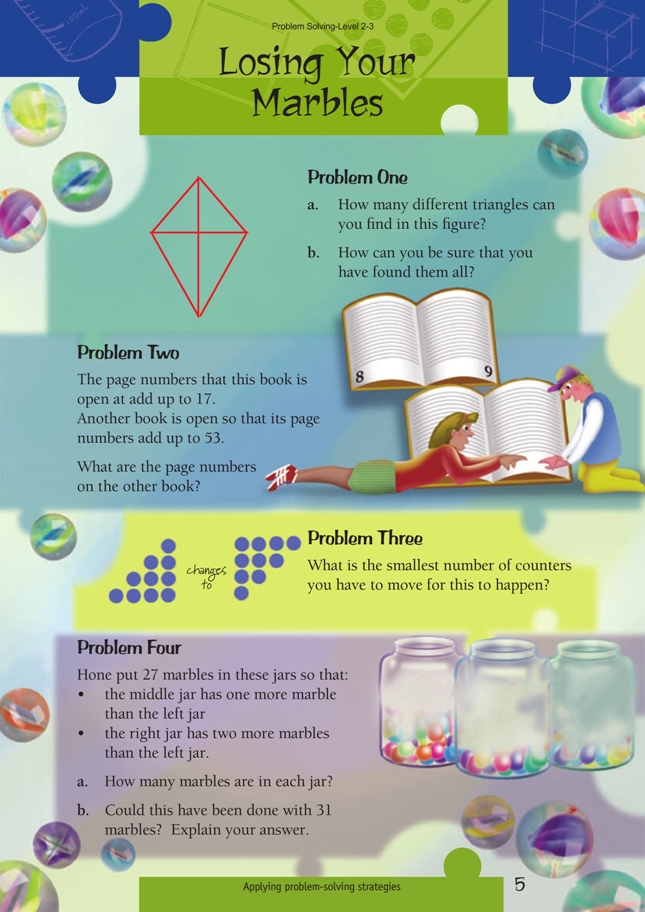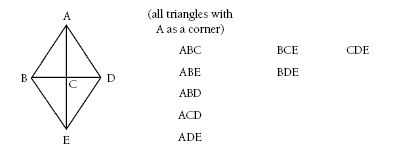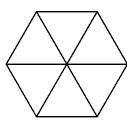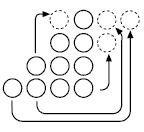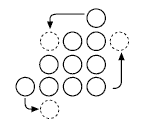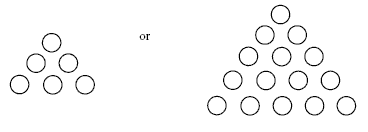These are level 2 number and geometry problems from the Figure It Out series.
A PDF of the student activity is included.
Click on the image to enlarge it. Click again to close. Download PDF (208 KB)
find triangles within a shape (Problem 1)
use addition strategies to solve problems (Problems 2 and 4)
Problem One
This problem requires students to think systematically. Possible strategies are:
i. Classify the triangles as those that are triangles by themselves and those that are made up of two small triangles, three triangles, or four triangles.
Results could be organised as follows:
Single triangles: 4
Two triangles: 4
Three triangles: 0
Four triangles: 0
ii. Label the vertices (corners) of the figure and use these labels to make a list of all the possible triangles.
To extend the problem, draw more complex figures, such as:
Problem Two
Students may solve this problem by trial and improvement. Noting that 25 is half of 50 will make this strategy more efficient. Alternatively, students might divide 53 by 2 to get the median, 26.5, which will quickly lead to the solution.
As an extension, give the students the sum of four pages in a row or the product of two pages. For example:
“A book is open, and the product of the two page numbers is 600. What are the page numbers?”
(The solution is 24 and 25.)
Problem Three
Making a model of the problem with counters will be essential for many students. Encourage the students to record their moves diagrammatically so they can recount them later. Students may initially think the smallest number of moves is four, as shown in this diagram:
Encourage them to solve the problem in fewer than four moves, as shown here:
A related exercise might be to ask students to shift the smallest number of counters to turn these triangles upside down:
Problem Four
Students could make a model of the problem with counters or multilink cubes and cups. There are connections between this problem and Problem Two in that finding the median of the numbers leads directly to the answer. That is, 27 ÷ 3 = 9, so the middle jar holds nine marbles, the left jar one less (8), the right jar one more (10).
Thirty-one is not divisible by three, so you could not divide up the marbles between the jars in the same way. Students may recognise that these conditions can only be met when the jar totals are a multiple of three.
Answers to Problems
1. a. 8
b. You could draw the diagram and highlight a different triangle each time, or you could label the vertices (corners) of the figure and use these labels to make a list of all the possible triangles.
2. 26 and 27
3. 3 moves
4. a. 8, 9, 10
b. No. 31 is not divisible by 3.
